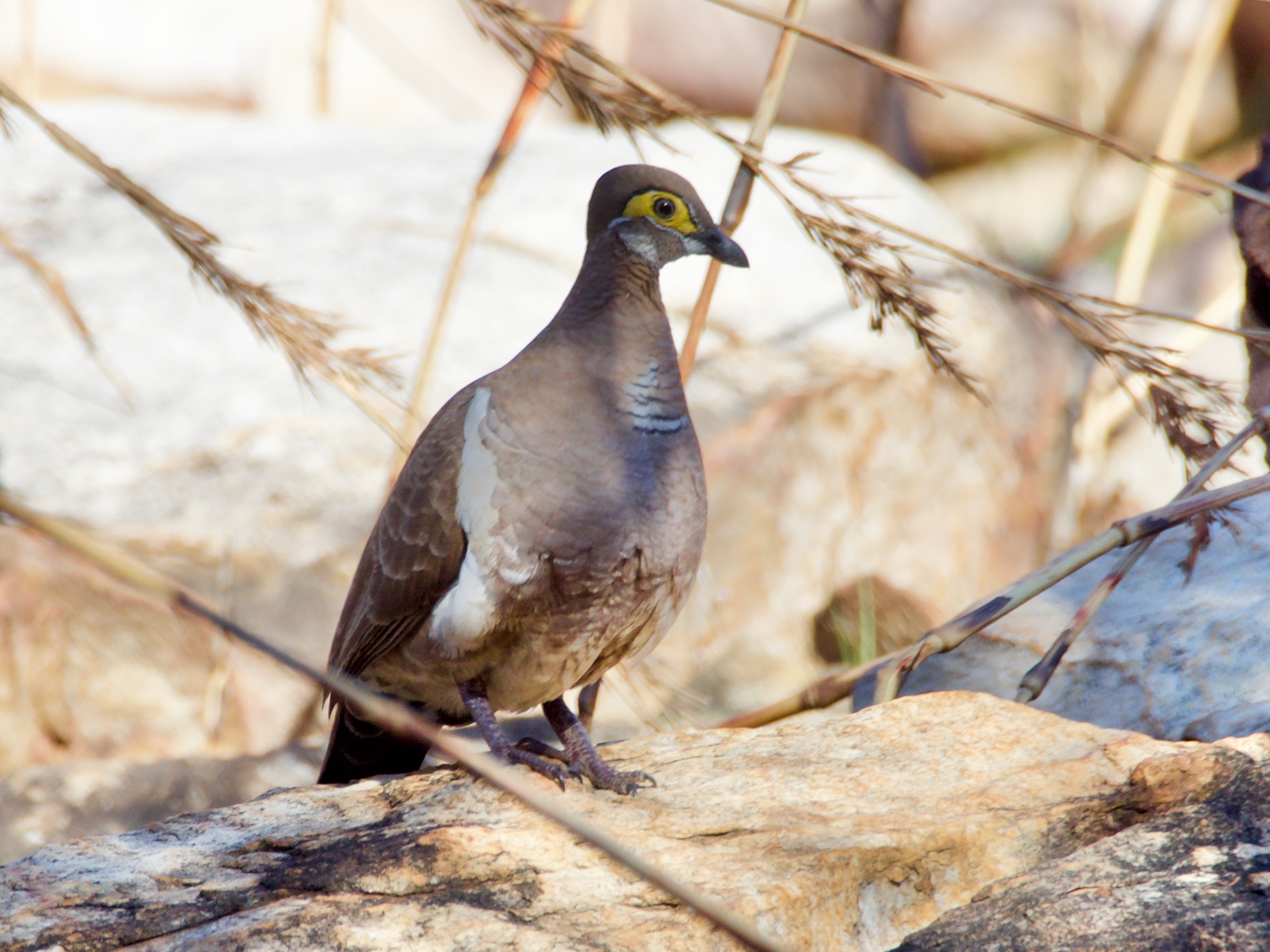By Pippa Kern, Wildlife Ecologist, Dambimangari Aboriginal Corporation and Joey Clarke, Senior Science Communicator
Northern Quolls and goannas are among the animals being targeted in a significant expansion to the biodiversity survey program at Yampi Sound Training Area in the west Kimberley, getting underway this year. Yampi is part of the Traditional Lands of the Dambimangari People and, under a five-year partnership with the Australian Defence Force, Australian Wildlife Conservancy (AWC) has been working closely alongside Dambimangari Rangers to plan and deliver ecological and management programs (weeds, fire and feral animals are monitored and reported on annually) at the site since 2016. In a positive move for all, AWC’s formal partnership with Defence has now been extended for an additional two years, along with a commitment to a major scaling up of the science program in 2022–2023.

Yampi is vast: at 568,000 hectares, it is Australia’s second-largest military training area and larger than the world’s 30 smallest countries. The landscape is dramatic and varied with towering quartzite escarpments and sweeping valleys of tropical savanna woodland and grasslands, and hundreds of kilometres of rugged coast. Waterfalls spout from cracks in the sandstone during the wet season, and the deeper gorges shelter significant patches of lush Kimberley rainforests, with fruit pigeons feeding in the canopy. The sheer scale of the task means that large tracts have been necessarily overlooked in biodiversity surveys conducted to date.
 Brad Leue/AWC
Brad Leue/AWC
Over 2022–2023, Defence has committed to expanding the science program with AWC and Dambimangari Aboriginal Corporation (DAC) to undertake the most comprehensive round of wildlife surveys ever at Yampi. By mapping the populations and abundance of species, these surveys will help inform conservation strategies being developed for the long-term management of the Training Area.
Inventory surveys carried out in the initial phase have already confirmed that the area is an important stronghold for threatened species, harbouring critical populations of mammals like the Kimberley Brush-tailed Phascogale, Golden Bandicoot, and Golden-backed Tree Rat.

The endangered Northern Quoll is a species that is disappearing across the north, but it has been recorded in abundance at Yampi. Known locally as ‘Wijingadda’, quolls have been recorded across almost all habitat types surveyed. Elsewhere, invading cane toads – which continue their westward hop into the region – have taken a heavy toll on Kimberley quoll populations. Surveillance of the quoll populations at Yampi over the next few years will be crucial to understanding what factors might help the species persist.
Other priorities for the expanded survey include:
Yampi Sound Training Area is of outstanding conservation value and an important area for Dambimangari Traditional Owners, rich in cultural sites. Over the next two years, the AWC field team and Dambimangari Traditional Owners and Rangers will be on the ground building a greater understanding of the biodiversity of the area. In addition, this collaboration enables young Indigenous Rangers to be trained in biodiversity monitoring techniques and feral management. The program provides a rare opportunity for Dambimangari Rangers, Elders and Young People to access remote, restricted areas of their Country, to visit important cultural sites, transfer traditional knowledge and engage in cultural activities alongside the biodiversity program. AWC is committed to scaling up conservation efforts to protect Australia’s wildlife and habitats. This first large-scale wildlife survey at Yampi, and the extension of the partnership for a further two years, helps deliver on this commitment.
 Tim Woods/AWC
Tim Woods/AWC
Species spotlight: the Western Partridge Pigeon (Geophaps smithii blaauwi)
Northern Australia’s savannas are productive landscapes for birds, with intact grasslands and woodlands providing blossom and seed for noisy flocks of honeyeaters, parrots, finches, and pigeons. Seed-eating birds that feed on the ground are particularly susceptible to changes in grass and groundcover. One of the species that has been identified as vulnerable is the Western Partridge Pigeon. These squat, brown birds often forage in recently burnt patches, making the most of easy pickings on bare ground to feed on fallen grass seeds. Cattle grazing and disrupted fire regimes represent their main threats, while feral cats make an easy meal of them. Western Partridge Pigeons frequent the area close to the operations base at Yampi Sound Training Area, where hills of crumbled sandstone meet the flatter, savanna country. This species is subject to targeted monitoring by AWC and DAC, as part of annual waterhole surveys for threatened birds at Yampi.
 Joey Clarke/AWC
Joey Clarke/AWC
Read and download the full issue of Wildlife Matters here.
Donate to help save Australia’s threatened wildlife and wild places
Donate Now